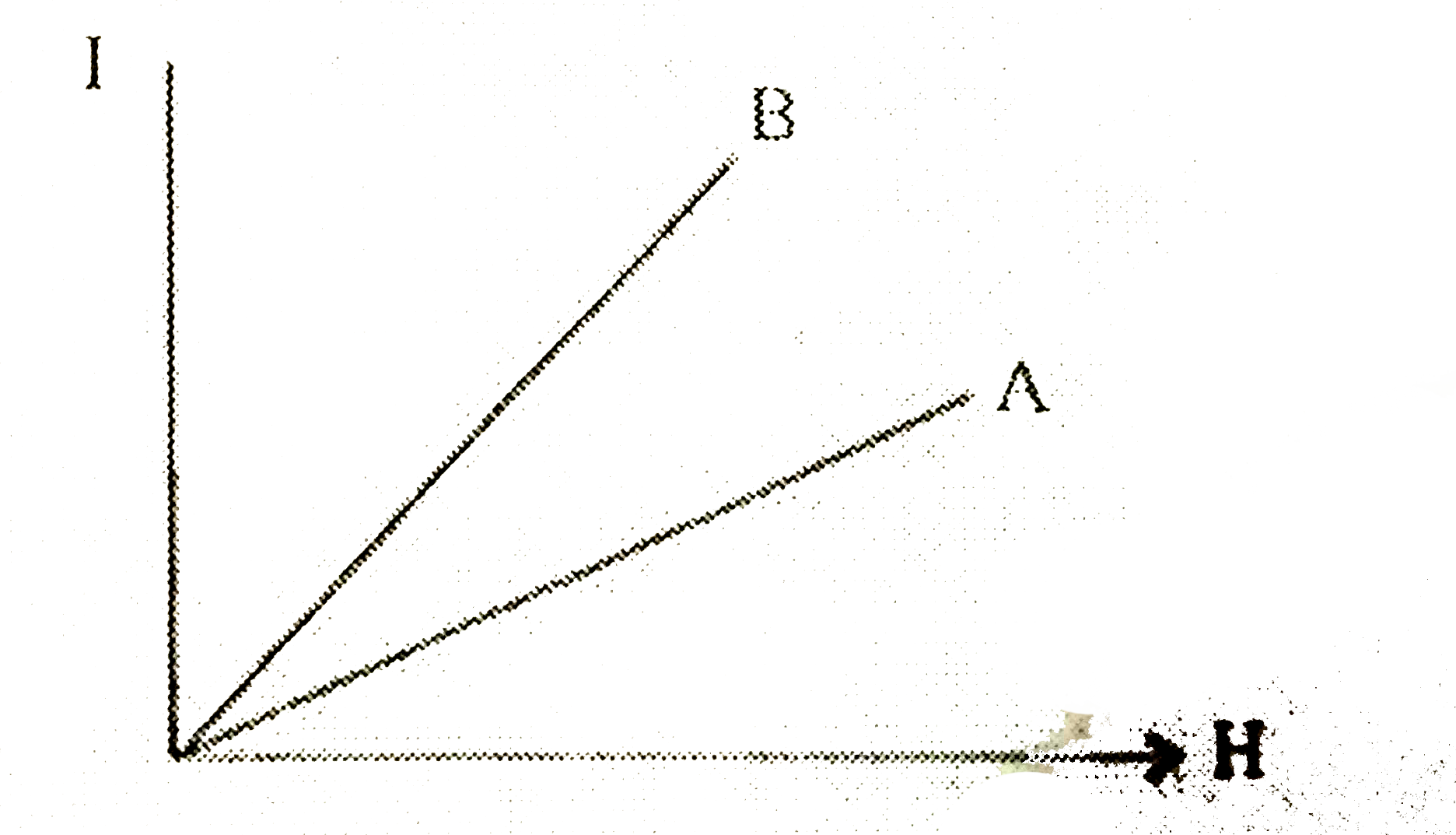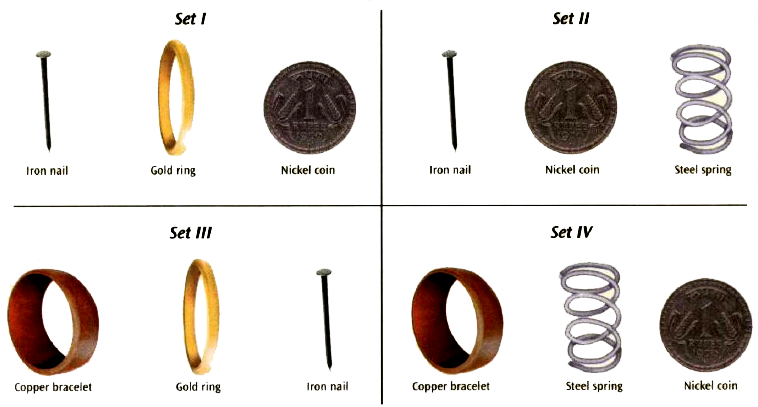Out of the two magnetic materials. 'A' has relative permeability slightly greater than unity while 'B' has less than unity. Identify the nature of materials 'A' and 'B'. Will their susceptibilities be positive or negative?
To solve the problem, we need to analyze the given information about the two magnetic materials, A and B, in terms of their relative permeability and susceptibility.
1. Understanding Relative Permeability:
- Material A has a relative permeability (μr) slightly greater than 1: μr>1.
- Material B has a relative permeability (μr) less than 1: μr<1.
2. Identifying the Nature of the Materials:
- When μr>1, the material is classified as paramagnetic. This means that the material is attracted to magnetic fields and allows magnetic field lines to pass through it.
- When μr<1, the material is classified as diamagnetic. This means that the material is repelled by magnetic fields and expels magnetic field lines.
3. Determining Susceptibility:
- The magnetic susceptibility (χm) is related to relative permeability by the formula:
χm=μr−1
- For Material A (paramagnetic):
- Since μr>1, it follows that χm>0. Therefore, the susceptibility of material A is positive.
- For Material B (diamagnetic):
- Since μr<1, it follows that χm<0. Therefore, the susceptibility of material B is negative.
Final Identification:
- Material A: Paramagnetic (Positive susceptibility)
- Material B: Diamagnetic (Negative susceptibility)
- Material A has a relative permeability (μr) slightly greater than 1: μr>1.
- Material B has a relative permeability (μr) less than 1: μr<1.
- When μr>1, the material is classified as paramagnetic. This means that the material is attracted to magnetic fields and allows magnetic field lines to pass through it.
- When μr<1, the material is classified as diamagnetic. This means that the material is repelled by magnetic fields and expels magnetic field lines.
- The magnetic susceptibility (χm) is related to relative permeability by the formula:
χm=μr−1
- For Material A (paramagnetic):
- Since μr>1, it follows that χm>0. Therefore, the susceptibility of material A is positive.
- For Material B (diamagnetic):
- Since μr<1, it follows that χm<0. Therefore, the susceptibility of material B is negative.
- Material A: Paramagnetic (Positive susceptibility)
- Material B: Diamagnetic (Negative susceptibility)
Topper's Solved these Questions
- BOOK - XII BOARD PREVIOUS YEAR PAPER ENGLISHCHAPTER - XII BOARDSEXERCISE - [SET - II DELHI BOARD]5videos
XII BOARDS
- BOOK - XII BOARD PREVIOUS YEAR PAPER ENGLISHCHAPTER - XII BOARDSEXERCISE - [SET - III, DELHI BOARD]6videos
XII BOARDS
- BOOK - XII BOARD PREVIOUS YEAR PAPER ENGLISHCHAPTER - XII BOARDSEXERCISE - SET-II33videos
XII BOARDS
- BOOK - XII BOARD PREVIOUS YEAR PAPER ENGLISHCHAPTER - SAMPLE PAPER 2019EXERCISE - SECTION D6videos
SAMPLE PAPER 2019
Similar Questions
Name the substrate which has R.Q value less than unity.
View SolutionThe relative magnetic permeability of a magnetic material is 800. Identify the nature of magnetic material and state its two properties.
View SolutionTwo magnetic materials A and B have relative magnetic permeabilities of 0.96 and 500 . Identify the magnetic materials A and B .
View SolutionFor ferromagnetic material, the relative permeability (mu_(r)), versus magnetic intensity (H) has the following shape
View SolutionTwo substances A and B have their relative permeabilities slightly greater and slightly less than I respectively. What do you conclude about A and B as far as their magnetic materials are concerned ?
View SolutionThe following figure shows the variation of intensity of magnetisation versus the applied magnetic field intensity, H, for two magnetic materials A and B :
(a) Identify the materials A and B.
(b) Why does the material B, have a larger susceptibility than A, for a given field at constant temperature?
 View Solution
View SolutionWhich of the following azeotropic solution has the b.p. less than b.p. of the constituents A and B ?
View SolutionA solenoid has a core of a material with relative permeability 400. The windings of the solenoid are insulated from the core and carry a current of 2A. If the number of turns is 1000 per metre, calculate (i) H (ii) B (iii) Intensity of magnetisation I, and the magnetising current.
View SolutionFour sets, each having three materials, are given here.
a. Identify the set that has all three magnetic materials.
b. Identify the sets that have only one non-magnetic material.
c. Identify the set that has only one magnetic material.
 View Solution
View SolutionThe magnetic field B and the magnetic intensity H in a material are found to be 1.6Tand1000Am−1 respectively. Calculate the relative permeability μ, and the susceptibiliyt χ of the material.
View Solution

